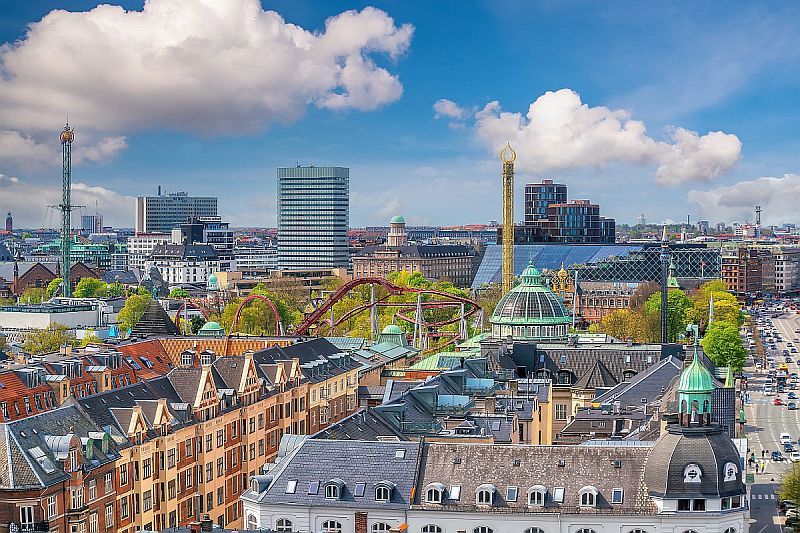News
Smart cities
Urban infrastructure planning
Urban mobility
The Bicycle Snake


No more carrying your bicycle
Many Copenhageners know it. You cycle towards the shopping centre Fisketorvet and want to take a short cut over Bryggebroen to Islands Brygge to, for example, take a swim in the harbour. Suddenly the cycle lane comes to an end and you have to lug your bike down a load of steps, and cyclists and pedestrians have to share the limited space on the steps that lead from the main entrance of Fisketorvet down to the swimming area of the harbour at Kalvebod Brygge. It is five and a half metres down to the harbour, and until June of this year walking up and down those steps carrying a bicycle was part of the daily hubbub for 11-12,000 Copenhageners.
Copenhagen Municipality has now done something about this, and the solution has become something of an attraction. Next to the steps is now a 235 metre long bicycle bridge. It has been given the appropriate name The Bicycle Snake, as it weaves its way around the glass-fronted buildings on the harbour front level with the first floor. The bridge is exclusively for bicycles, and pedestrians no longer need to fight for space with the cyclists on Havneholmen.
The Bicycle Snake’s surface is orange to the delight of onlookers and cyclists. It is an artificial surface dusted with quartz sand dyed orange, which gives traction so cyclists won’t slide, and which gives the Snake something recognisable. It is four metres wide, which makes it possible to cycle side-by-side and still have room for those overtaking – even on the bends.
Architects with ambitions
The Bicycle Snake was drawn up by Dissing+Weitling Architects, who also designed Bryggebroen. The connection wasn’t originally thought of as a bridge, just more or less a ramp for bicycles. Dissing+Weitling surprised with their ambitious bridge design and in 2013 they won Copenhagen Municipality’s Push-Up prize for their initiative in designing a solution that exceeded all expectations. The bridge cost 38 million Danish kroner, 6 million of which came in funding from the state.
After the design phase, which began in 2010, construction started at the end of 2012. At that time, the bridge was expected to be finished in the second half of 2013, but the project was delayed primarily because of problems with the delivery of the steel for sections of the bridge and the ramp that came by freighter all the way from Shanghai. The Bicycle Snake could finally be opened officially on June 28th, where head of the city’s Technology and Environment Department, Morten Kabell, took followers on a cycle safari, and there was salsa dancing, crossfit and a treasure hunt at Fisketorvet where there is now a whole new city space now the bicycle traffic uses The Cycle Snake.
The world’s best cycling city has no missing links
The establishment of The Bicycle Snake is one part of Copenhagen Municipality’s goal of becoming the world’s best city for cycling. Copenhagen’s network of cycle lanes must be connected so that the bicycle becomes an even easier and faster choice for the people of Copenhagen to get around the city. Missing links in the network should be removed by, for example, establishing new bicycle lanes, bridges, tunnels and throughways to make road junctions safer.
It is estimated that the time saved by cyclists because of The Bicycle Snake amounts to more than 5 million Danish kroner, with many other positive effects not even taken into consideration. On top of that, it is expected that the number of cyclists will rise now the Snake is open. That means that The Bicycle Snake will have paid for itself in 8 years, based on timesaving alone.
You should consider reading
solutions
Combined heat and power production
+6
CopenHill: The story of the iconic waste-to-energy plant
20 November 2024solutions
Urban infrastructure planning
+2
SuperBlockify
15 November 2024publications
Combined heat and power production
+9
District Energy
25 October 2024events
Urban planning and development
+7















